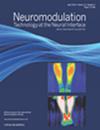Investigating the Working Mechanism of Transcranial Direct Current Stimulation
IF 3.2
3区 医学
Q2 CLINICAL NEUROLOGY
引用次数: 0
Abstract
Background
Transcranial direct current stimulation (tDCS) is used to modulate neuronal activity, but the exact mechanism of action (MOA) is unclear. This study investigates tDCS-induced modulation of the corticospinal excitability and the underlying MOA. By anesthetizing the scalp before applying tDCS and by stimulating the cheeks, we investigated whether stimulation of peripheral and/or cranial nerves contributes to the effects of tDCS on corticospinal excitability.
Materials and Methods
In a randomized cross-over study, four experimental conditions with anodal direct current stimulation were compared in 19 healthy volunteers: 1) tDCS over the motor cortex (tDCS-MI), 2) tDCS over the motor cortex with a locally applied topical anesthetic (TA) on the scalp (tDCS-MI + TA), 3) DCS over the cheek region (DCS-C), and 4) sham tDCS over the motor cortex(sham). tDCS was applied for 20 minutes at 1 mA. Motor evoked potentials (MEPs) were measured before tDCS and immediately, 15, 30, 45, and 60 minutes after tDCS. A questionnaire was used to assess the tolerability of tDCS.
Results
A significant MEP amplitude increase compared with baseline was found 30 minutes after tDCS-MI, an effect still observed 60 minutes later; no time∗condition interaction effect was detected. In the other three conditions (tDCS-MI + TA, DCS-C, sham), no significant MEP modulation was found. The questionnaire indicated that side effects are significantly lower when the local anesthetic was applied before stimulation than in the other three conditions.
Conclusions
The significant MEP amplitude increase observed from 30 minutes on after tDCS-MI supports the modulatory effect of tDCS on corticospinal neurotransmission. This effect lasted one hour after stimulation. The absence of a significant modulation when a local anesthetic was applied suggests that effects of tDCS are not solely established through direct cortical stimulation but that stimulation of peripheral and/or cranial nerves also might contribute to tDCS-induced modulation.
研究经颅直流电刺激的工作机制。
背景:经颅直流电刺激(tDCS)用于调节神经元活动,但其确切的作用机制(MOA)尚不清楚。本研究探讨了经颅直流电刺激对皮质脊髓兴奋性的调节及其潜在的作用机制。通过在应用 tDCS 前麻醉头皮和刺激脸颊,我们研究了刺激外周神经和/或颅神经是否有助于 tDCS 对皮质脊髓兴奋性的影响:在一项随机交叉研究中,对 19 名健康志愿者进行了四种阳极直流电刺激实验条件的比较:1)在运动皮层上进行 tDCS(tDCS-MI);2)在运动皮层上进行 tDCS,同时在头皮上局部涂抹局部麻醉剂(TA)(tDCS-MI + TA);3)在面颊区进行 DCS(DCS-C);4)在运动皮层上进行假 tDCS(sham)。运动诱发电位(MEPs)在 tDCS 之前和 tDCS 之后的 15、30、45 和 60 分钟分别进行测量。问卷调查用于评估对 tDCS 的耐受性:结果:与基线相比,tDCS-MI 30 分钟后发现 MEP 振幅明显增加,60 分钟后仍能观察到这种效应;未发现时间∗条件交互效应。在其他三种情况下(tDCS-MI + TA、DCS-C、假),未发现明显的 MEP 调节。调查问卷显示,在刺激前使用局部麻醉剂时,副作用明显低于其他三种情况:结论:tDCS-MI 刺激后 30 分钟内观察到的 MEP 振幅明显增加支持了 tDCS 对皮质脊髓神经传递的调节作用。这种效应在刺激后持续一小时。在使用局部麻醉剂时没有发现明显的调节作用,这表明 tDCS 的效应并非仅通过直接刺激大脑皮层来建立,刺激外周神经和/或颅神经也可能有助于 tDCS 诱导的调节作用。
本文章由计算机程序翻译,如有差异,请以英文原文为准。
求助全文
约1分钟内获得全文
求助全文
来源期刊

Neuromodulation
医学-临床神经学
CiteScore
6.40
自引率
3.60%
发文量
978
审稿时长
54 days
期刊介绍:
Neuromodulation: Technology at the Neural Interface is the preeminent journal in the area of neuromodulation, providing our readership with the state of the art clinical, translational, and basic science research in the field. For clinicians, engineers, scientists and members of the biotechnology industry alike, Neuromodulation provides timely and rigorously peer-reviewed articles on the technology, science, and clinical application of devices that interface with the nervous system to treat disease and improve function.
 求助内容:
求助内容: 应助结果提醒方式:
应助结果提醒方式:


